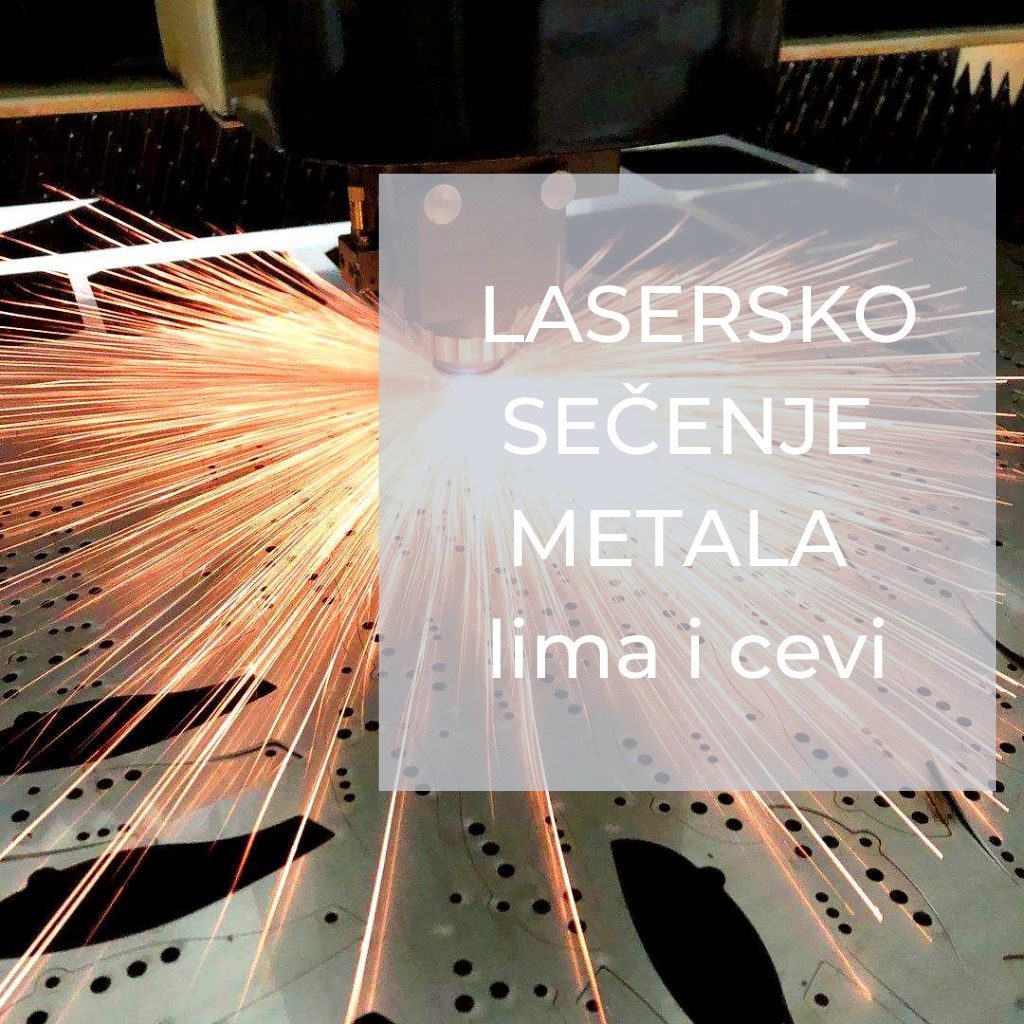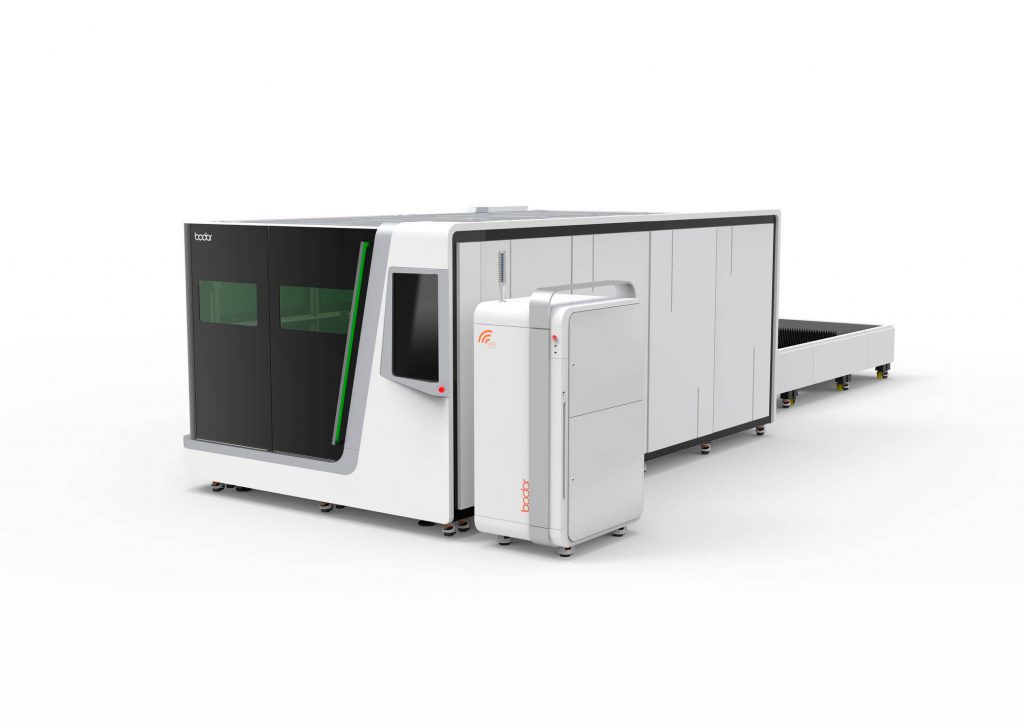Laser cutting of metal
Laser cutting of sheet metal
Laser cutting of pipes

Laser cutting of metal
Thanks to the state-of-the-art fiber laser that we have in our machine park, we are able to offer our clients serviceable laser metal cutting. For now, we have developed serviceable CNC sheet metal cutting as well as laser pipe cutting with high precision and cutting speed.
Laser cutting of sheet metal
We cut the following types of sheet metal:
- Carbon steel – maximum thickness up to 15mm,
- stainless steel – maximum thickness up to 10mm,
- aluminum – maximum thickness up to 6mm,
- copper – maximum thickness up to 4mm,
- brass – maximum thickness up to 6mm
The maximum format of sheet metal that can be treated with a laser is 1500mm×3000mm.
Laser cutting of pipes
The laser allows us to cut the following types of pipes:
- round pipes with a diameter of fi20 do fi200mm,
- square tubes with a diameter of up to 140x140mm
The effective length of the pipe is 3.5 meters.
We successfully manufacture parts for various types of machines, complete assemblies and sub-assemblies from the construction, automotive, metal processing, food, chemical and pharmaceutical industries.
Contact us for the price and additional information about cooperation opportunities.
The laser cutting machine we own

Bodor P3015T - fiber laser- sheet and tube laser cutting machines
- Working area: 1500mmx3000mm
- Cutting power: up to 3000KW
- Speed: up to 300mm/sec
- Accuracy: ± 0,02mm
- Effective diameter: round pipes fi20-fi200mm, square up to 140x140mm
- Effective length: pipe 3.5m
- Max thickness of sheet for cutting: steel – 15mm, stainless steel – 10mm, aluminum – 6mm, copper – 6mm, brass – 6mm
Sheet metal laser cutting process
In a short video, see what the laser cutting process looks like in our workshop.
What is laser metal cutting?
Laser metal cutting is a technology that uses a high-intensity laser beam that, in synergy with an inert gas, cuts the material.
This type of metal cutting works by aiming a high-powered laser directly at the metal through optics. Laser optics, together with computer numerical control – CNC (computer numerical control)is used to direct the generated laser beam. A focused laser beam is directed at the metal, which is then melted, burned, vaporized or blown away by a pressurized air jet, leaving an edge with a high-quality surface finish. . In addition to sheet metal, pipes and profiles can also be laser cut.
Laser cutting process
In order for the laser cutting process to be efficient and economical, it is necessary to set the laser parameters before cutting. Most of the lasers used in industrial production are started with the help of CNC technology, so the setting process itself requires knowledge of computer control, knowledge of laser cutting technology, as well as a good knowledge of the composition of marks and properties of materials that are cut with a laser beam.
Laser (light amplification by stimulated emission of radiation) uses an infrared laser beam to cut a wide range of materials. A laser beam is a beam of high-frequency energy that is focused on a single point on the metal being cut. By focusing a laser beam on a small area of metal, the surface is heated to the point where melting begins and gases are used to remove the molten material.
Focusing the laser beam is possible using special mirrors or optical fibers that are located in the head of the laser cutter and are used to direct the light to the lens that focuses the laser beam on the work surface. At the beginning of cutting, on co2 lasers, the beam travels from the laser resonator and is directed by mirrors towards the nozzles, while with fiber lasers, the beam is transmitted by an optical cable. After passing through the nozzle, the laser beam hits the metal being cut and after a very short time interval penetrates through it, which starts the laser cutting process itself. During laser cutting, the laser head moves over the material being cut at a certain distance. The speed and quality of cutting depends on this distance of the laser head.
In order to be able to start cutting from somewhere other than the edge, a hole is drilled before each cut. Drilling usually involves a high-powered pulsed laser beam that slowly makes a hole in the material, and the process itself can take a fraction of a second or a few seconds depending on the thickness of the metal.
Features of laser metal cutting
Different types of gases are used during laser cutting. Gases can be oxygen and nitrogen. The gas is selected based on the type of material being cut. The laser beam melts the metal that is being cut, and the gas has the task of removing the molten metal from the surface with its current so that the cut is of the highest quality.
The laser cutting process itself has several parameters that are variable. One of them is whether the laser beam will be pulsed or continuous. The power of the laser beam determines the penetration. A A pulse beam is used for precise cutting.The continuous beam finds application when it comes to smooth and thick materials.
What types of metal can the laser cut?
Lasers are used to cut various types of metals. For certain types of metal such as stainless steel, it is the most economical type of cutting. The laser can be used to cut:
- Carbon steel
- stainless steel
- aluminum
- copper
- brass
Basic advantages of laser cutting
The high speed of technology development has led us to the fact that today this is one of the most economical, efficient and fastest methods for cutting metal. The main advantages of this type of metal cutting compared to mechanical cutting are:
- High level of cutting precision – CNC laser cutting allows us to obtain shiny and smooth, precise edges, therefore additional metal processing is not required. The precision of laser cutting lies in the fact that the laser beam does not wear out over time. (The fiber laser that we own provides us with a precision of even ± 0.02mm. )
- High cutting speed – Thanks to laser technology, we can cut the desired shapes much faster than traditional cutting methods. (The fiber laser we own allows us to achieve a cutting speed of up to 300mm/sec.)
- Low level of material deformation – There are few chances that the metal that is being cut will deform, distort or be damaged, because the laser systems during cutting are directed to a small area of the metal that is then under the influence of heat.
- The possibility of obtaining irregular external and internal shapes – The main advantages of laser cutting compared to mechanical cutting are related to easier management and manipulation of the cutting object. This allows us to obtain the desired regular or irregular shapes on the metal. In addition, contamination of the material itself is significantly reduced (because there is no cutting edge), i.e. there is no direct contact between the laser and the material being cut. Some materials are also very difficult or impossible to cut by traditional means, while the non-contact laser does it easily.
- Low level of environmental pollution – the laser uses less energy during the cutting process itself, and also does not pollute the environment. Operator safety has been raised to a higher level.
Application of laser cutting
Today’s modern cutting lasers use CNC control or are some kind of robot. With the advancement of cutting technology and thanks to the high precision of lasers, laser metal cutting finds application in numerous branches of industry.
Laser cutting is an excellent way to produce prototypes, but also mass production for a large number of products.
- Production and processing
- Metallurgy
- Construction
- Electronics
- Architecture
- Shipbuilding
- Mining
- Car industry
- Agricultural machines
- Aviation
The cost of laser cutting
The price of laser metal cutting depends on the requirements themselves, that is, on the type, quality and thickness of the material being cut.
If you need service laser cutting of sheets or pipes, call us.
Contact us for price and additional information.
We will be happy to answer all your questions.
